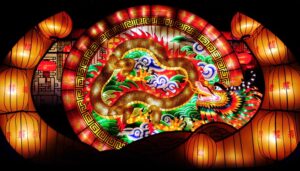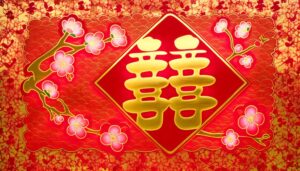What is the Symbol for Faith in Chinese?
The Chinese character for faith, 信 (xìn), holds deep cultural, philosophical, and spiritual meanings, tracing its origins to ancient oracle bone inscriptions from the Shang Dynasty. Evolving through the Zhou Dynasty, it symbolizes trustworthiness and sincerity, integral to Chinese societal values.
The character functions on dual levels—internal belief and external trust—emphasizing moral integrity and relational harmony. Confucianism, Daoism, and Buddhism enrich this symbol with dimensions of loyalty, cosmic order, and spiritual progress.
Calligraphy further elevates its significance, reflecting artistic balance and cultural ethos. To uncover the nuances of this profound symbol..
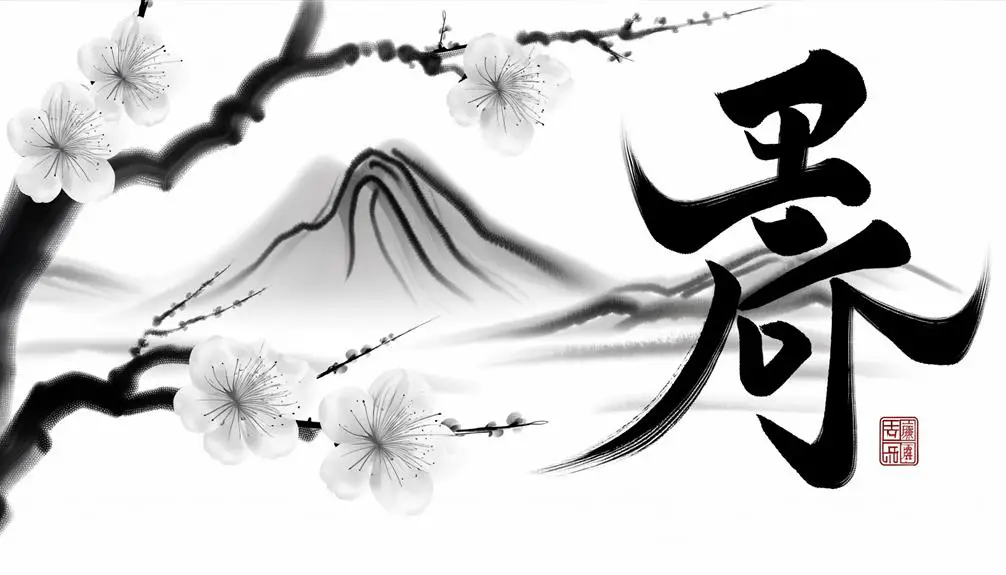
Key Takeaways
- The Chinese symbol for faith is 信 (xìn), representing trustworthiness and sincerity.
- Historically, 信 (xìn) originates from ancient inscriptions and texts, including oracle bone script from the Shang Dynasty.
- Philosophically, 信 (xìn) embodies belief and trust, crucial in Chinese culture for interpersonal and societal relationships.
- In Confucianism, 信 underscores moral integrity and trustworthiness essential for family harmony and honest business practices.
- Chinese calligraphy uses 信 to express personal faith and communal values, highlighting balance and harmony in artistic expressions.
Historical Origins
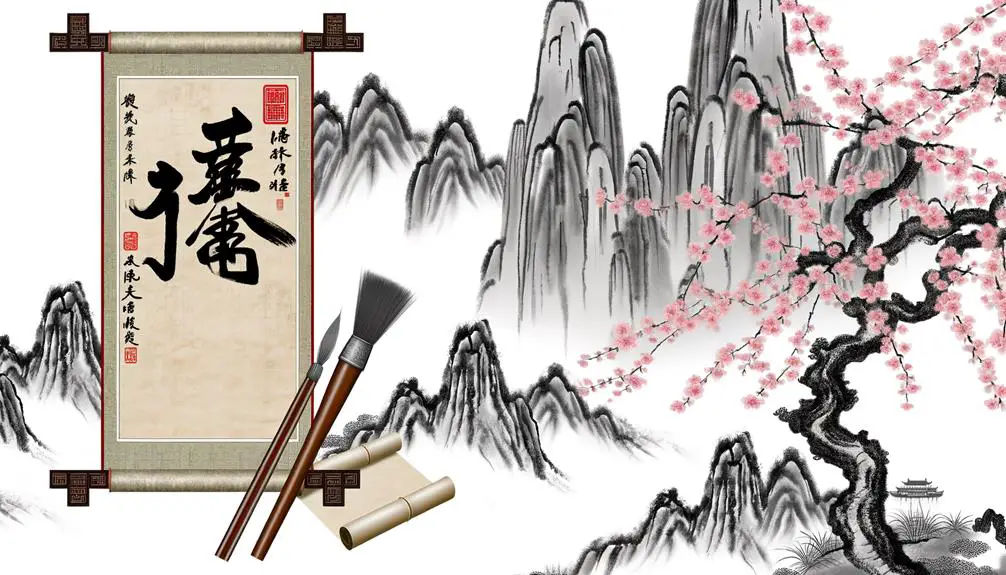
The historical origins of the symbol for faith in Chinese culture can be traced back to ancient inscriptions and texts that reflect the society's foundational values and philosophical beliefs. Early evidence is found in oracle bone script from the Shang Dynasty (1600-1046 BCE), where the character for faith, 信 (xìn), combines the elements of a person and words, symbolizing trustworthiness and sincerity.
As Chinese writing evolved through the Zhou Dynasty (1046-256 BCE) and subsequent periods, this character maintained its core elements, underscoring its enduring importance. The symbol's consistent representation across various historical texts underscores a societal emphasis on moral integrity and relational trust, integral to both personal conduct and governance within Chinese civilization.
Philosophical Significance
The philosophical significance of the Chinese symbol for faith, 信 (xìn), encapsulates profound concepts of belief and trust, serving as a cornerstone for interpersonal and societal relationships.
This symbol's interpretation within Chinese culture extends beyond mere linguistic value, embodying a spiritual connection that informs ethical behavior and communal harmony.
Analyzing 信 (xìn) through these dimensions reveals its integral role in shaping both individual ethos and collective cultural identity.
Belief and Trust
Exploring the philosophical significance of belief and trust within the context of the Chinese symbol for faith reveals profound insights into the cultural and existential dimensions of these concepts.
In Chinese philosophy, the symbol for faith (信, xìn) embodies an intrinsic interrelationship between belief (信仰, xìnyǎng) and trust (信任, xìnrèn).
Belief pertains to the acceptance of truths or principles often grounded in metaphysical or spiritual domains. Trust, conversely, denotes an interpersonal or societal reliance and confidence in others' integrity and reliability.
Together, they form a holistic view where faith is not solely an abstract principle but a lived experience. This duality underscores the philosophical integration of internal convictions with external relational dynamics, emphasizing harmony and co-dependence in Chinese thought.
Cultural Interpretation
Interpreting the Chinese symbol for faith (信, xìn) within its cultural and philosophical context reveals a multi-layered understanding that intertwines individual conviction with communal integrity. This character embodies core values deeply ingrained in Chinese culture, reflecting Confucian, Daoist, and Buddhist principles.
- Confucianism: Faith (信) emphasizes trustworthiness and loyalty, key virtues in maintaining social harmony.
- Daoism: It signifies an alignment with the Dao, suggesting an inherent trust in the natural order and the universe.
- Buddhism: Faith is integral to the path towards enlightenment, promoting a belief in the teachings and the potential for spiritual progress.
- Interpersonal Relationships: 信 represents the foundation of reliable and honest interactions, essential for familial and societal cohesion.
This intricate symbol encapsulates a holistic approach to faith, blending personal belief with societal values.
Spiritual Connection
Building on the cultural interpretation, the philosophical significance of faith (信, xìn) in the Chinese context extends deeply into spiritual domains, where it serves as a linchpin for existential understanding and metaphysical alignment.
In traditional Chinese philosophy, particularly within Confucianism and Daoism, faith embodies a harmonious balance between the self and the cosmos. Confucian thought emphasizes 信 as moral integrity and trustworthiness, essential for societal harmony and personal virtue.
Conversely, Daoism views faith as an intrinsic connection to the Dao (道), the fundamental principle underlying the universe. Therefore, 信 transcends mere belief, evolving into an existential ethos that integrates individual purpose with universal order, fostering a profound spiritual connection that influences both personal conduct and communal relationships.
Cultural Context
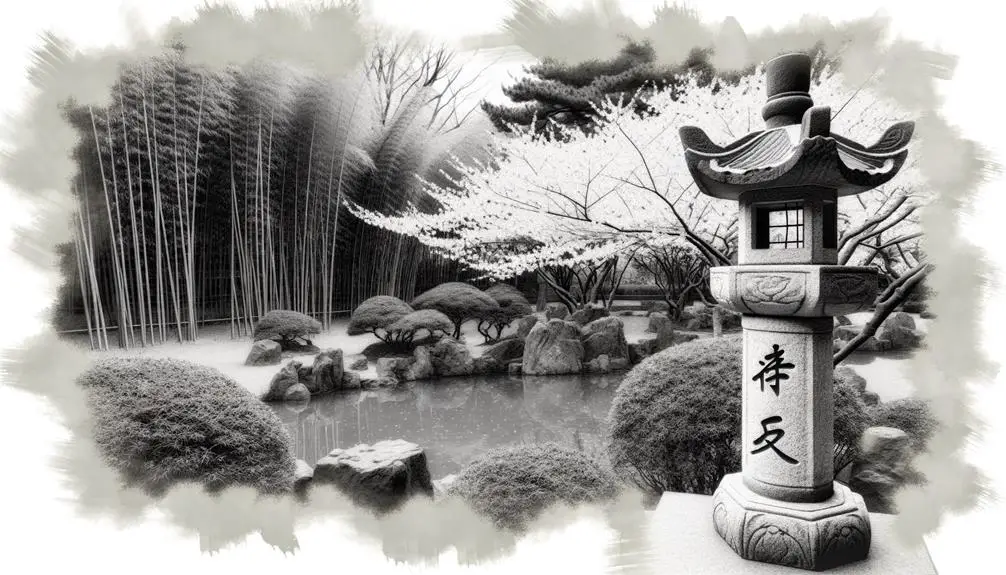
In examining the cultural context of the symbol for faith in Chinese, it is important to take into account its historical significance, which traces back to ancient philosophical texts and religious traditions.
The symbolic representation of faith, often rendered as 信 (xìn), encapsulates a multifaceted meaning that bridges personal belief and communal trust.
Modern interpretations continue to evolve, reflecting contemporary socio-cultural dynamics while retaining the essence of traditional values.
Historical Significance
Tracing its origins back to ancient Chinese civilization, the symbol for faith, 信 (xìn), embodies a profound cultural and philosophical heritage that underscores the importance of trust, sincerity, and moral integrity in traditional Chinese thought.
Historically, its significance can be delineated through:
- Confucianism: Emphasized 信 (xìn) as a core virtue essential for social harmony and personal conduct.
- Political Doctrine: Used to foster loyalty and trust between rulers and subjects, essential for stable governance.
- Literature and Art: Frequently depicted in classical texts and artworks, reflecting its esteemed status.
- Everyday Life: Integral in interpersonal relationships and contracts, ensuring societal cohesion.
This historical backdrop highlights 信 (xìn) not merely as a symbol but as a foundational element of Chinese social and moral fabric.
Symbolic Representation
Understanding the historical significance of 信 (xìn) allows us to appreciate its symbolic representation in contemporary Chinese culture, where it continues to manifest in various forms of expression and social practice.
The character 信, denoting faith, trust, and honesty, permeates various cultural artifacts such as calligraphy, literature, and religious texts. It also holds substantial weight in social interactions, embodying the Confucian virtue of trustworthiness, a cornerstone in personal and communal relationships.
The recurring use of 信 in idioms and proverbs further underscores its importance, providing moral guidance. In modern ceremonies and rituals, the character is prominently featured, symbolizing integrity and spiritual devotion, thereby bridging past traditions with present-day cultural practices.
Modern Interpretations
While the character 信 (xìn) has ancient roots, its modern interpretations in Chinese culture reveal a dynamic interplay between tradition and contemporary values.
The modern context of 信 encompasses various dimensions:
- Religious Faith: 信 is central in religious practices, symbolizing trust in spiritual doctrines.
- Personal Integrity: It reflects one's moral compass, emphasizing honesty and ethical behavior.
- Social Trust: 信 plays a vital role in fostering societal bonds, underlining reliability in social interactions.
- Future Optimism: Emphasizes hope and confidence in future prospects, bridging traditional beliefs with modern aspirations.
This multifaceted interpretation underscores the character's enduring relevance, illustrating how it adapts to the evolving cultural landscape while maintaining its foundational significance.
Modern Interpretations
In contemporary Chinese society, the symbol for faith, 信 (xìn), has evolved beyond its traditional religious connotations to encapsulate a broader spectrum of cultural and personal beliefs. This evolution reflects China's dynamic socio-cultural landscape, where faith is not solely rooted in religious doctrines but also in interpersonal trust, moral integrity, and societal cohesion.
The character 信 now signifies a multifaceted concept of faith, encompassing trust in relationships, confidence in personal convictions, and adherence to ethical principles. Such modern interpretations highlight the adaptability of Chinese characters in expressing complex, contemporary sentiments, illustrating how ancient symbols remain relevant by resonating with the changing values and ideologies of modern society.
This broadened scope underscores the nuanced role of 信 in today's cultural discourse.
Symbolic Art and Calligraphy

Exploring the world of symbolic art and calligraphy, one observes that the character 信 (xìn) is not merely a linguistic element but a profound medium through which Chinese artists convey deep-seated cultural and philosophical meanings. The artistry involved in calligraphy transforms 信 into an emblem of aesthetic and spiritual resonance.
Historical Context: Calligraphy has been revered in Chinese culture for millennia, with each stroke embodying historical significance.
Philosophical Depth: The character 信 encapsulates the virtues of trust and integrity, integral to Confucian thought.
Aesthetic Value: The fluidity of brushstrokes in calligraphy highlights the balance and harmony valued in Chinese art.
Expressive Medium: Artists utilize 信 to express personal faith and communal values, making it a versatile symbol in artistic expressions.
This multifaceted approach deepens our appreciation of 信 in symbolic art and calligraphy.
Faith in Everyday Life
Faith, manifesting as the character 信 (xìn) in Chinese, permeates everyday life by shaping interpersonal relationships, guiding ethical behavior, and reinforcing societal norms grounded in millennia-old traditions.
In Confucian thought, 信 (x\u00cn) underscores the importance of trustworthiness and sincerity in personal and professional interactions. This character's presence is evident in familial bonds, where mutual trust fosters harmony, and in business dealings, where 信 (x\u00cn) ensures fair practices and long-term partnerships.
Moreover, 信 (x\u00cn) guides moral conduct, emphasizing honesty and integrity. Embedded in Chinese proverbs and folklore, this concept reflects a society deeply rooted in mutual respect and communal responsibility.
Therefore, 信 (x\u00cn) remains a cornerstone of Chinese cultural identity and daily living practices.
Conclusion
The Chinese symbol for faith, imbued with layers of historical, philosophical, and cultural significance, serves as a beacon of unwavering conviction.
It stands resiliently, much like an ancient tree deeply rooted in tradition, its branches stretching into various facets of modern life.
Through the artistry of calligraphy and the steadfastness of everyday practice, this emblem continues to flourish, embodying the enduring human spirit and the timeless quest for trust and belief.



